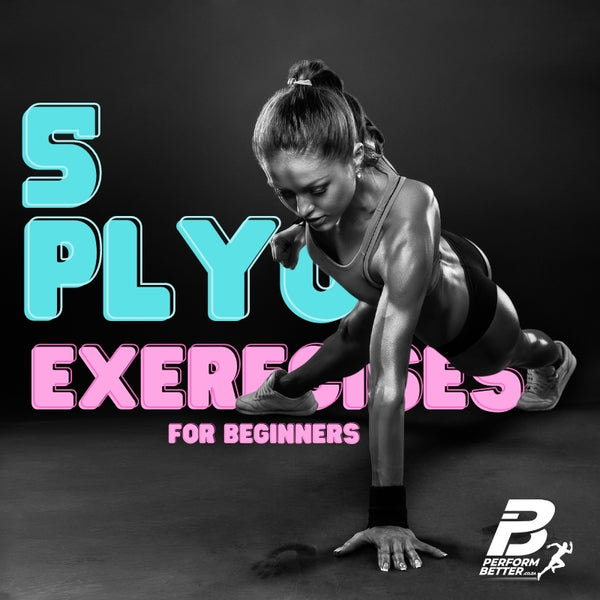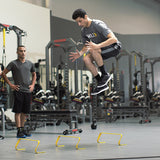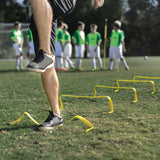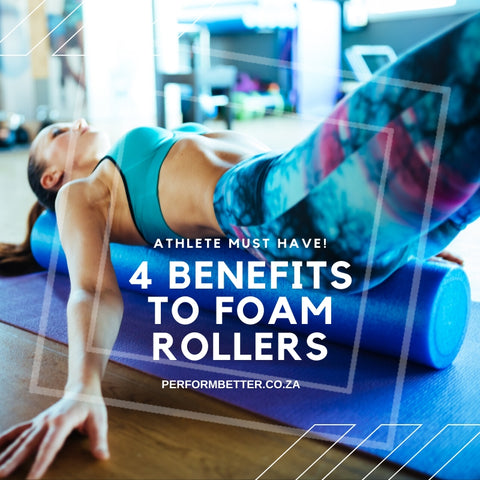News
5 Essential Plyometric Exercises for Beginners - Build Explosive Legs
First... What is Plyometric Training?

The term plyometric literally sounds like rocket science or some super difficult form of mathematics, fortunately, it’s got nothing to with any of that and is actually fairly simple. According to (Walker, 2016) “Plyometric training, otherwise referred to as ‘plyometrics’ or ‘shock training’, is a type of training which often requires athletes to jump, hop, bound and/or skip.
Plyometric should not be confused with ‘ballistic’ training, which is ultimately another word for ‘trajectory’ training. Ballistic training involves the trajectory of objects and implements (e.g. barbells and medicine balls), whereas plyometric training uses the previously mentioned movements.” In simpler terms,
- Plyos = Jumping
- Ballistic training = Throwing or jumping with weight
Risks with Plyometric Training.
Although plyometrics require specific fitness and skills levels it doesn’t mean that beginners are not welcome to do it. According to (Cronkleton, 2019) Plyometric exercises can cause stress to the tendons, ligaments, and lower-extremity joints, especially the knees and ankles. It’s important that you have the strength and fitness level necessary to do these exercises safely and effectively.
(Cronkleton, 2019) Encourages that if you’re adding plyometric exercises to your workout routine, work up to them gradually. Slowly increase the duration, difficulty, and intensity of the exercises. If one does too much too quickly you’ll be guaranteed a painful injury.
It is advised to start Plyometric training with the guidance of a professional and to touch base frequently to check progress but at the same time, doing plyometric exercises correctly has been shown to help prevent injuries due to the strain placed on the body. (George Davies, 2015)
What are the benefits of Plyometric Training?
The main goal of Plyometric training is to increase explosive strength. They require you exert maximum force for a short amount of time causing maximum eccentric muscle contractions.
According to (Cronkleton, 2019) plyometric training is popular because it requires little to no equipment and they can be done anytime and anywhere. (Cronkleton, 2019) Also says that Plyometric training increases muscle strength, which allows you to run faster, jump higher, and change direction quickly. They improve performance in any sport that involves running, jumping, or kicking.
(Walker, 2016) Mentions the benefits of the use of the Stretch-shortening Cycle whereby the muscle undergoes an eccentric (Stretching muscle) contraction, followed by a transitional period prior to the concentric (Shortening of the muscle) contraction. According to (Walker, 2016)
The Stretch-Shortening cycle occurs in almost all movement therefore it only makes sense that training this cycle will only provide excellent results in strengthening muscles while improving agility, stability, and balance. These combined benefits allow your muscles to work more quickly and efficiently.
Plyometrics tone the entire body, burn calories and improve cardiovascular health. They also boost your stamina and metabolism.
(George Davies, 2015) Has said that Correct Plyometric training has shown to decrease the occurrence of first-time non-contact ACL injuries (A very common injury in many high impact sports.)
5 Beginner Plyometric Exercises.
1. Step-Up Jumps
- It’s like a normal step up but when coming up you jump with your planted foot.
- Place one foot on top of the bench and step up with the opposite leg.
- Upon going up exert force on the floor jumping up with the planted foot.
-
Slowly go into the start position.
2. The Half Box Jump:
One will be in a squat position go down for a squat and then when coming up one will launch and land on top of the box. Be cautious with this by starting with a low height and progressing higher as you master the basics.
- From standing, squat down to jump onto the box with both feet.
- Lift your arms up as you jump to gain momentum.
-
Land on the box and get off slowly.
3. Lateral and Back and Forth Hops.
This a very basic Plyometric exercise but it’s a great combination because you are not only getting the benefits of Plyometric training ut also that of agility training with quick opposite direction changes. This can be done by hopping over cones but it is recommended to hop higher so one can use a hurdle.
Lateral hops:
- Places cones or hurdle in a vertical line.
- With feet together hop over the obstacle from left to right.
Back and Forth Hops:
- Place cones over Hurdle in a horizontal Line
- With feet together hope over obstacle forwards and backwards.
4. Later Shuffle High Knees.
This is another two-in-one Plyometric exercise. This exercise involves lateral jumping over a hurdle creating a strong lateral movement focusing on keeping the knees high therefore also improving agility.
5. The Squat Jump.
In my opinion the most common Plyometric exercise.
- Stand with your feet slightly wider than your hips.
- Lower your body to squat down.
- Press up through your feet, engage your abdominals, and jump up explosively.
- Lift your arms overhead as you jump.
- Upon landing, lower yourself back down to the squatting position.
2 "Must Have" Plyometric Equipment to Build Explosive Legs
( Available in our store www.Performbetter.co.za )
SKLZ Hurdles - Set of 6 - Shop Now
 |
 |
 |
SKLZ Elevation Ladder - Shop Now
 |
 |
 |



